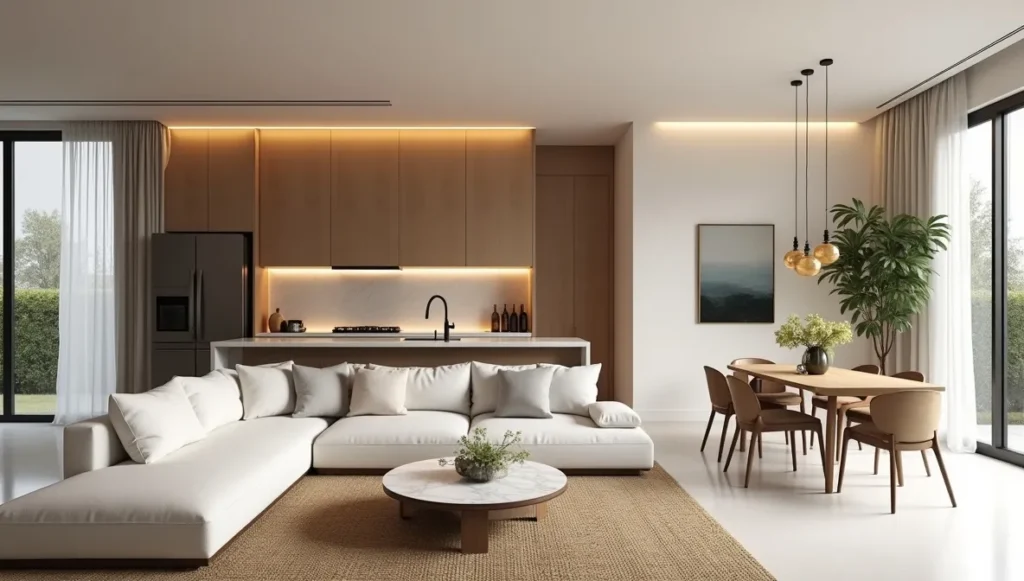- The Unexpected Magic of Boho Scandi: Why This Fusion Style is Taking Over Modern Homes - September 2, 2025
- Japandi Design: Why This Japanese-Scandinavian Hybrid Has Taken Over My Client Projects - September 2, 2025
- The Real Story Behind Transitional Interior Design: Why It Actually Works - September 1, 2025
Table of Contents
Okay, real talk. When people started asking me for “that clean look from Pinterest” back in like 2010, I honestly thought they were nuts. Who wants to live in a museum? Turns out I was the one who didn’t get it. After helping probably 200+ families transform their homes, I’m completely sold on this whole minimalism thing. But man, do people mess it up in spectacular ways.
Stop Making These Rookie Mistakes
First off and of utmost importance – minimalism is NOT about having three things in your entire house and calling it a day. I’ve walked into “minimalist” homes that felt about as welcoming as a subway station at 2am. Yikes. Here’s what happened to my client Sarah. She got so excited about the minimalist thing that she literally removed everything from her living room except this one white couch. ONE COUCH. Then she called me crying because her house felt “dead inside.”
We ended up putting back her favorite armchair (this gorgeous vintage piece her dad refinished), some beautiful indoor plants, some books she actually reads, and this amazing abstract painting her sister made. And boom! suddenly it felt like a home again instead of a waiting room. The secret sauce? Everything that stays has to earn its spot. Not just look pretty, but actually make your life better somehow. It all boils down to one thing – “balance”, which is of utmost importance.
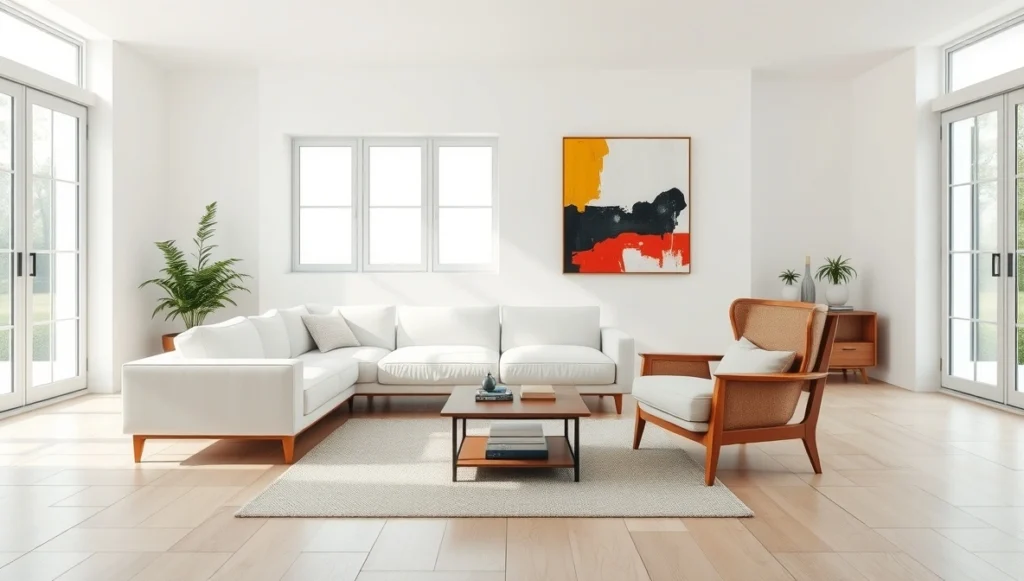
My Personal Rules That Actually Work
Rule One: The Happiness Test Pick up each thing and ask yourself that does this make me happy or serve a real purpose? Be brutal here. That ceramic elephant your aunt gave you five years ago that you’ve moved three times but never displayed? Yeah, that can go. I do this with my own stuff every few months. Still have clothes in my closet with tags on them from impulse buys. Why am I keeping a shirt I’ve never worn?
Rule Two: Buy Once, Buy Right This is where people get cheap and ruin everything. Minimalism doesn’t mean buying the absolute cheapest version of things just because you’re having fewer of them. My dining table cost me $1,200 twelve years ago. My friends thought I was insane spending that much. But I still get compliments on it, it’s developed this gorgeous patina, and it’ll probably outlast me. Meanwhile those friends have gone through probably 4-5 cheaper tables that looked like garbage after two years. Quality stuff ages beautifully. Cheap stuff just ages.
Rule Three: Personality is Non-Negotiable Pure function without soul is just depressing institutional design. Every space needs something that makes you smile when you see it. Could be art, could be a plant, could be a ridiculously comfortable reading chair in your favorite color. Just make sure it’s there and it’s genuinely YOU.
Colors That Don’t Suck
White kitchens everywhere. I’m so over it. White’s fine but it’s not the only option, people. Some colors I’m loving right now: this sage green that’s almost gray, warm mushroom tones, even deep navy when you want drama without chaos. The key is picking maybe 3 colors total and sticking with them throughout your space. That’s the kitchen I’ve recently delivered to my client.
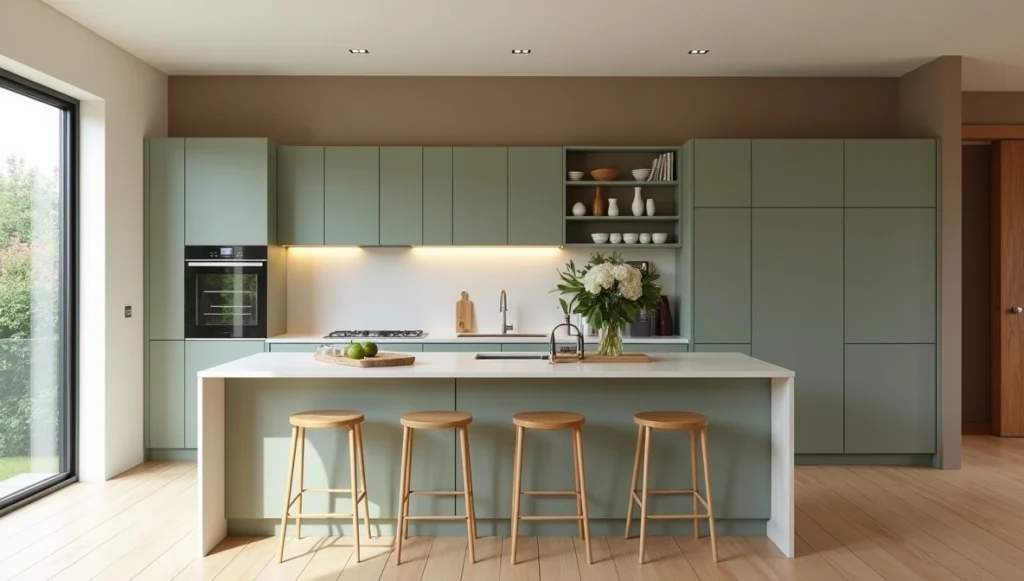
I also just finished this bedroom with Benjamin Moore “Cloud White” (way warmer than regular white) paired with natural linen and one piece of black and white photography. Feels calm but not like a hospital. Oh, and here’s something nobody tells you, is that the paint samples look completely different in your actual space than in the store. Buy the small sample cans and paint actual squares on your walls. Worth the extra twenty bucks to not hate your walls for the next five years.
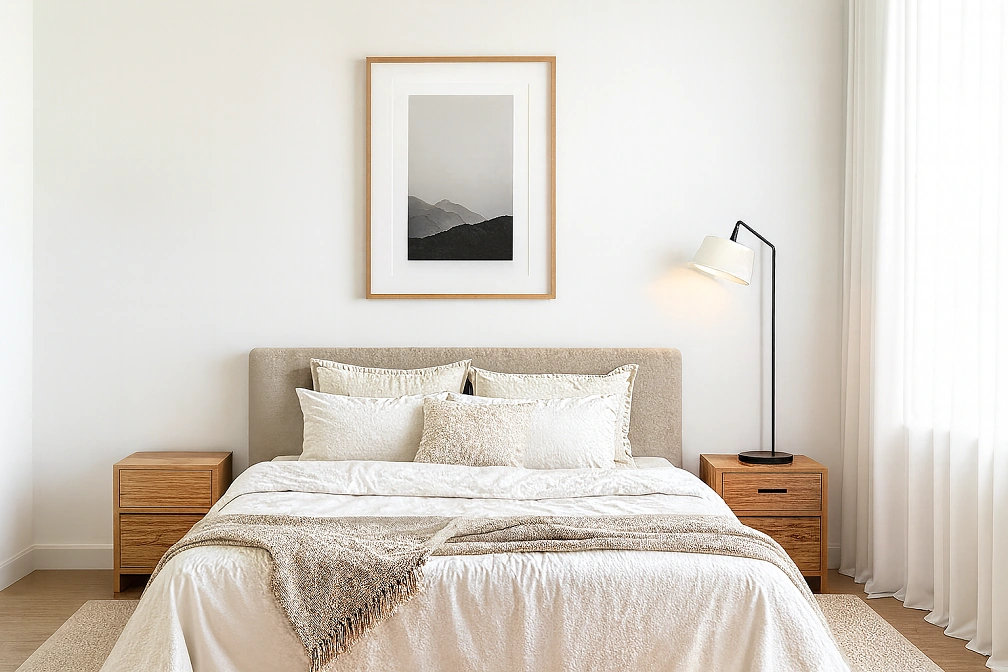
Furniture That’s Sneaky Smart
Storage ottomans that scream “I’M STORAGE” are the worst. Good minimalist furniture hides its tricks. Found this console table at an estate sale that looks like a simple mid-century piece. But it has these secret drawers that are practically invisible unless you know they’re there. Perfect for hiding remotes, phone chargers, all that daily stuff that clutters up surfaces.
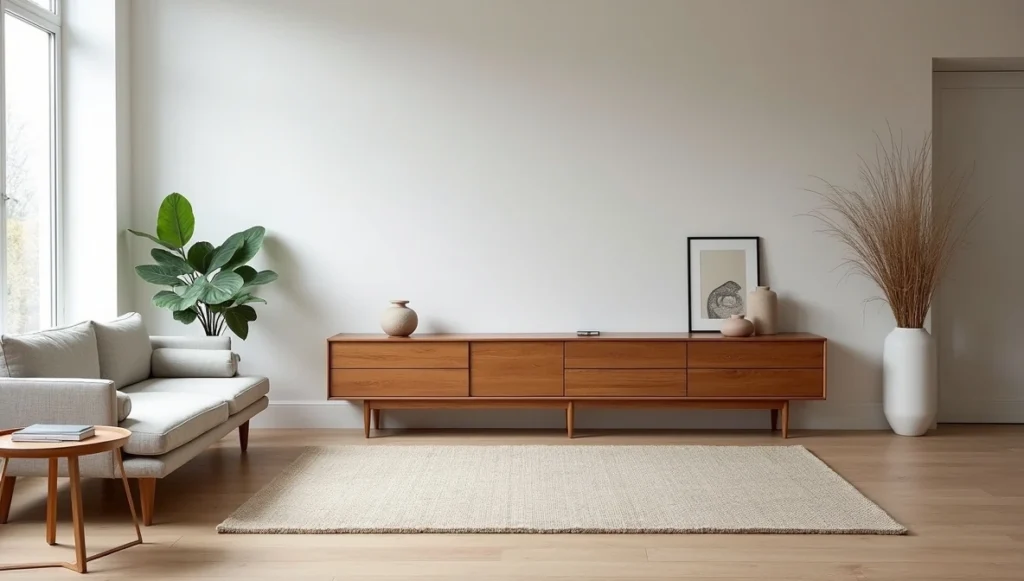
Same with bed storage…those lift-up platform beds are so obvious. Rather look for designs where storage is built into the frame sides or headboard. Way more elegant.
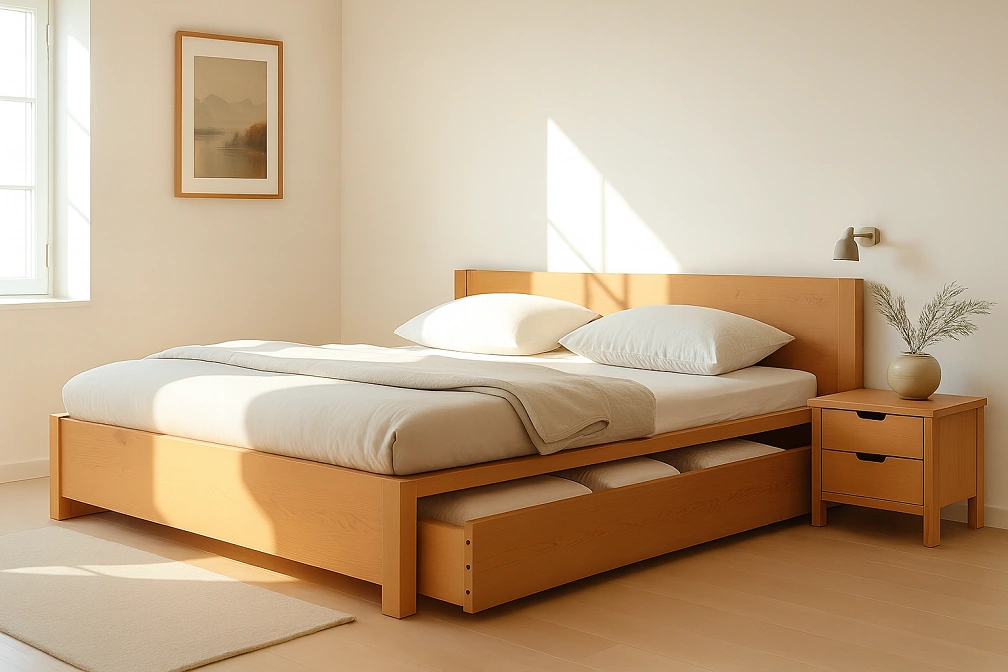
Lighting Will Make or Break Everything
Bad lighting murders minimalist spaces. Without a bunch of decorative stuff to create visual interest, your lighting has to work overtime. Start with windows – show them off. Heavy curtains are minimalism’s enemy. Go with simple linen panels or just leave them bare if your neighbors aren’t weird.
Then layer your artificial light. One ceiling fixture = harsh shadows and prison vibes. Add table lamps, floor lamps, maybe some LED strips hidden under floating shelves for that subtle glow. Currently obsessed with this Japanese-style pendant I found that looks like art during the day and gives the most amazing warm light at night.
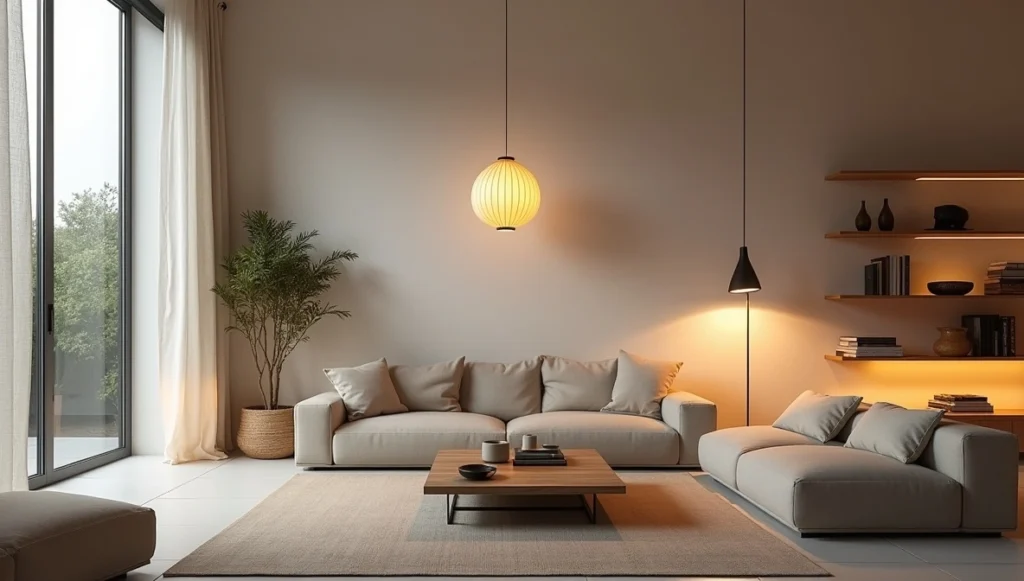
Real Talk: Room by Room
Living Rooms People Actually Want to Hang Out In
Comfortable seating first, pretty second. Learned this the hard way when a client’s gorgeous but uncomfortable sofa became expensive decoration while everyone crowded around the kitchen counter instead. Sectionals can work if they fit the space right. But honestly, a good sofa plus two chairs usually creates better conversation flow and looks less bulky. Coffee table should be about two-thirds your sofa length. Too big and it dominates everything. Too small and it looks lost and useless.
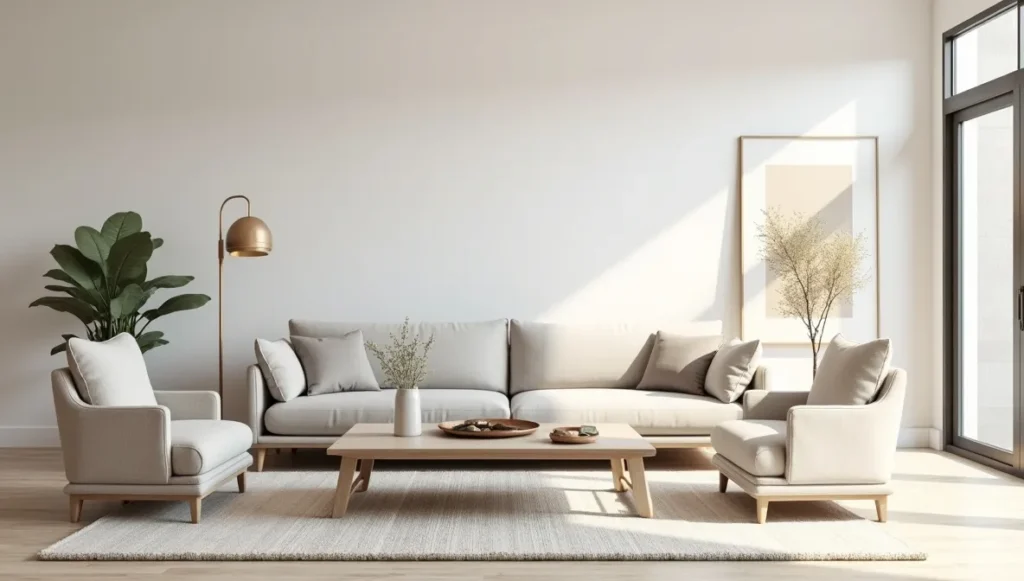
Bedrooms for Humans, Not Magazines
Nightstands should be basically empty. Lamp, maybe one book, done. That pile of random stuff? Find it a real home. Platform beds are great because there’s no visual clutter underneath, but if you need storage, make sure it’s hidden inside the frame somehow. And please, for the love of all that’s holy, no clothes on “the chair.” You know the one. Everyone has one. Don’t be everyone.
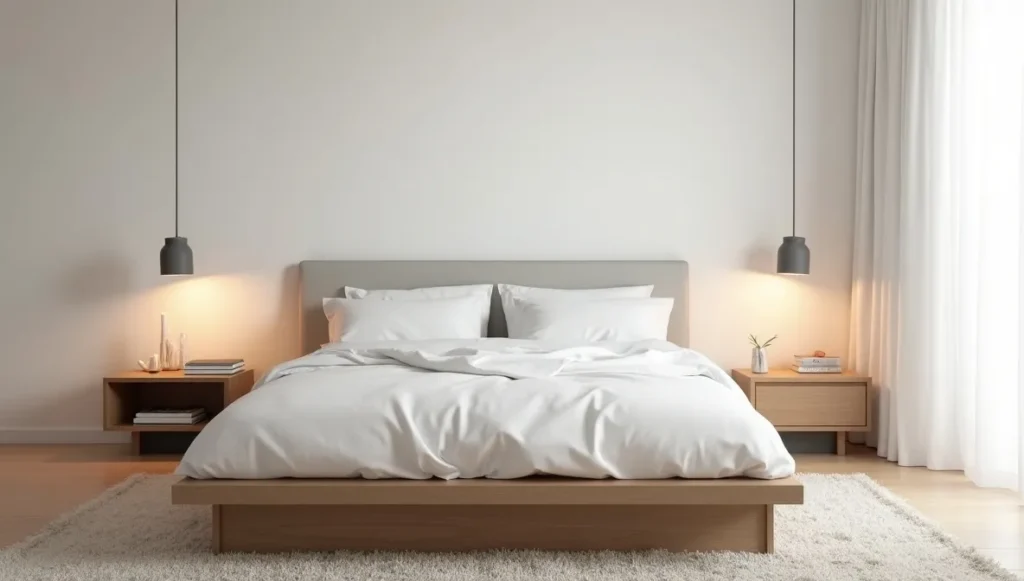
Kitchens That Actually Function
Counter space is everything. If you don’t use it daily, it shouldn’t live on your counter. I build these “appliance garages” – cabinets with doors that roll up to hide blenders and coffee makers and stuff. Keeps counters clear but everything’s still right there when you need it. Open shelving looks great in photos but only works if you’re super disciplined about what goes up there. Random mismatched containers will destroy the whole vibe, so try and keep matching ones in them.
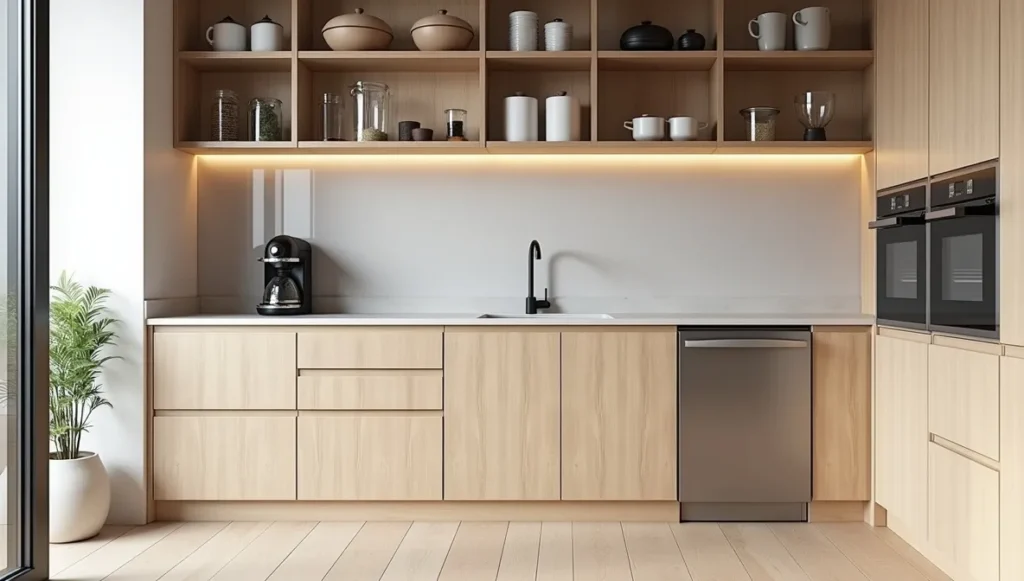
Bathrooms Without the Chaos
Wall-mounted vanities make tiny bathrooms look way bigger and there’s no weird corner where dust bunnies go to die. Medicine cabinets should be recessed, not stuck on the wall like an afterthought. Built-in shower niches beat those hanging shower caddies every single time. Towels – two colors max please. More than that and you’re running a gym, not a home.
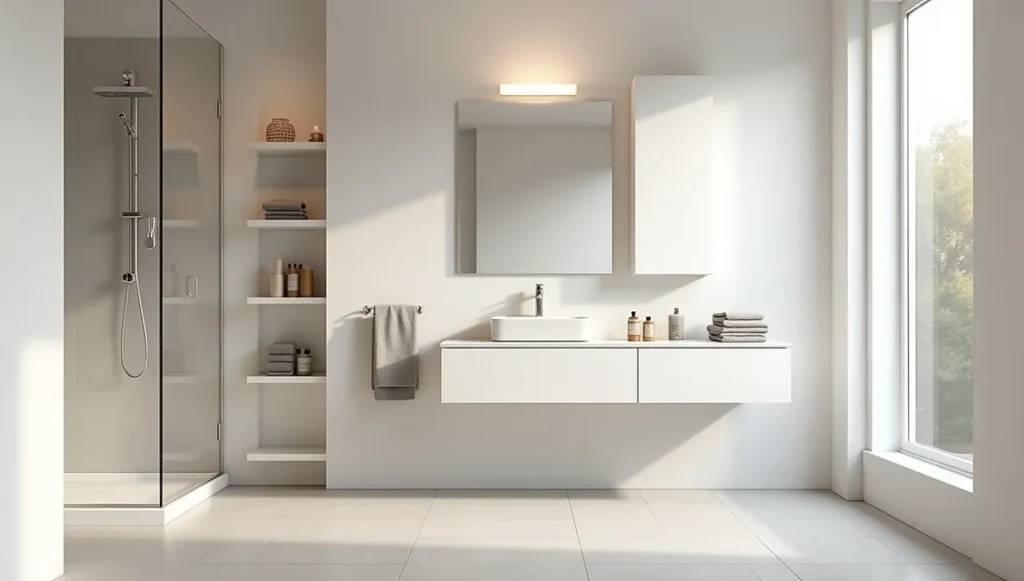
Home Offices That Don’t Make You Want to Scream
Clear desk = clear mind. Sounds cheesy but it’s true. Everything on your desk needs a specific home when you’re not using it. Cable management is huge – tangled cords destroy the clean look faster than anything. Invest in some wire management solutions or your setup will look like chaos no matter what. One piece of art or a small plant for personality. Skip the motivational quotes unless they genuinely motivate you (most don’t).
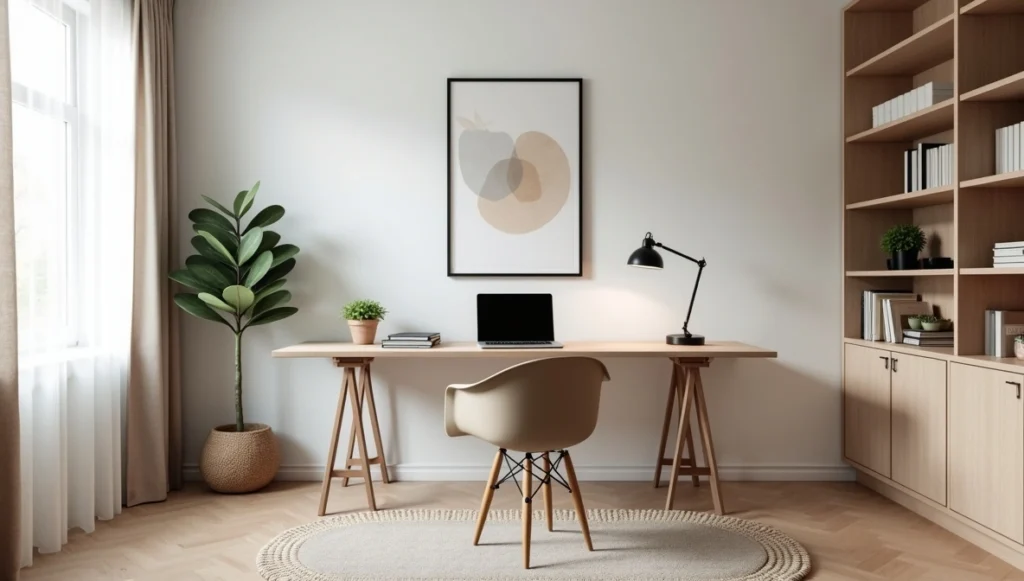
Dining Rooms for Real Life
Extension tables that look good both expanded and contracted are gold. Leaves stored in the table itself save space and look way cleaner. Mix your seating instead of matching everything. Bench on one side adds interest and usually seats more people than individual chairs.
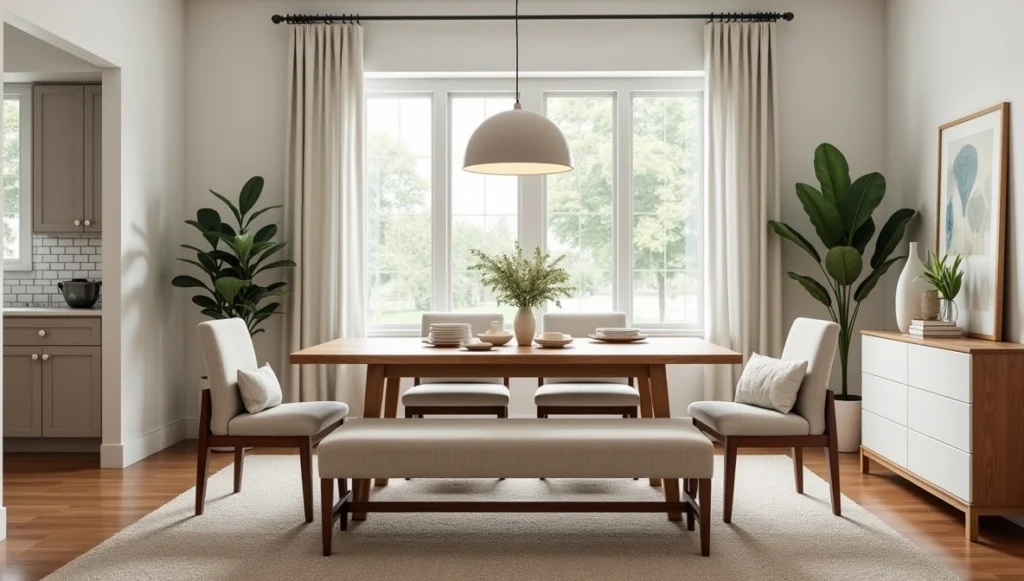
Entryways That Don’t Suck
Keep it simple. Have a console table, mirror, maybe one piece of art. Done. Coat storage has to be hidden though. Hall trees just become coat magnets. Better to have hooks inside a cabinet or closet.
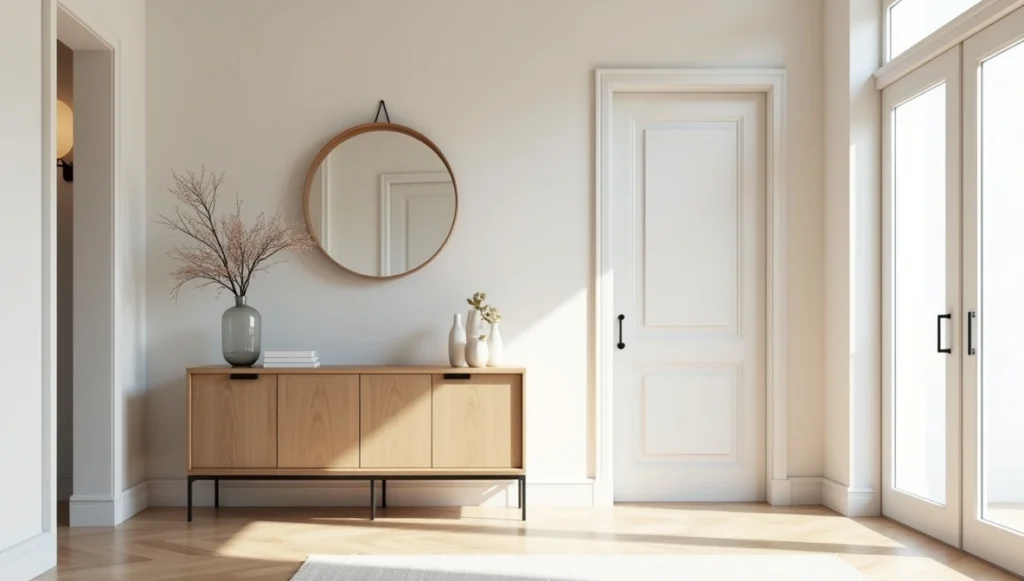
Kids’ Rooms That Stay Sane
Kids don’t need every toy they own visible at once. Rotate them, as they’ll actually play with stuff more when there’s less overwhelming choice. Storage at kid height so they can actually put things away themselves. High shelves just mean you’re doing all the cleanup forever. Let them pick one accent color. They’ll take better care of a space they helped design.
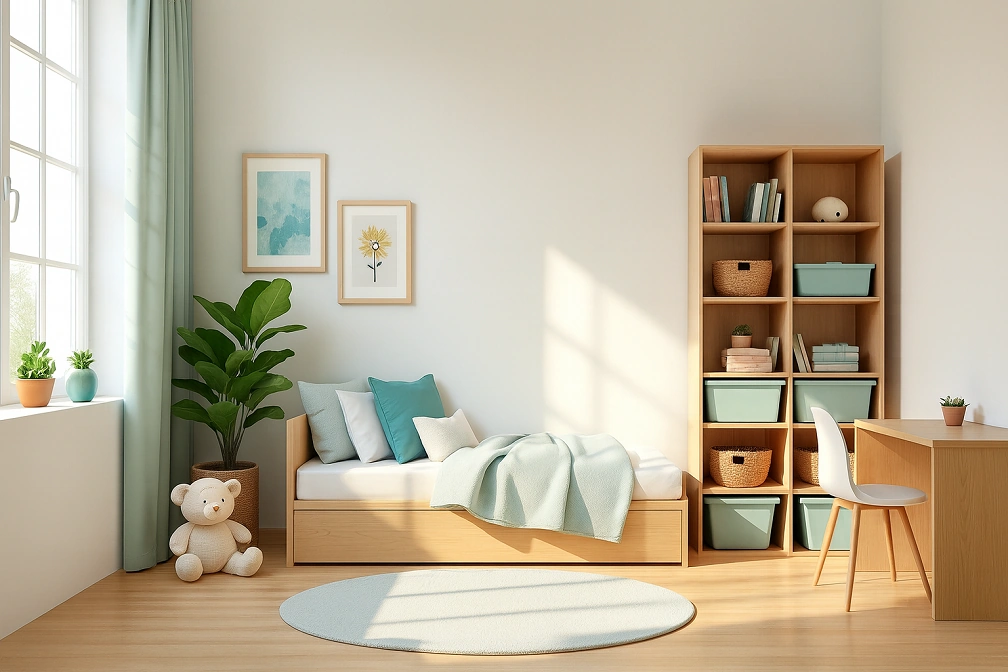
The Stuff Nobody Warns You About
Everything Shows
Dust, fingerprints, scratches – minimalist spaces hide nothing. You can’t disguise wear and tear behind decorative clutter anymore. That gorgeous black granite? Shows every water spot. The white sofa? Every spill is a crisis. Choose materials that age well and budget for more frequent cleaning. Natural wood with character hides normal wear better than high-gloss anything.
Good Storage Makes the Difference
All the stuff that doesn’t make the minimalist cut still needs to live somewhere – cleaning supplies, holiday decorations, extra bedding. Built-ins are worth it if you’re staying put. If you’re renting, look for furniture that hides storage without being obvious about it.
It Takes Forever to Get Right
My living room took almost ample time to feel complete. Not because I was slow, but because I was picky about every single addition. Rush it and you end up with empty rooms that feel unfinished. Take decent time(rather not forever!) to find pieces that actually belong.
Making It Work for YOUR Life
Listen – minimalism should make your life easier, not turn you into some zen monk who owns three things. Love to cook and need gadgets? Find beautiful ways to store them. Have kids who create art daily? Build in systems to display their work. The goal isn’t living like you’re in witness protection. It’s getting rid of stuff that doesn’t serve you so you can focus on what actually matters.
Why This Actually Sticks
Good minimalist design lasts because it’s about function as much as looks. The clients who are still living minimally years later? They adapted the style to fit their lives instead of forcing their lives to fit some magazine spread. My favorite minimalist homes feel lived-in and personal while keeping those clean lines that make everything feel calm and intentional.
Start small, be patient, and remember – it’s not about having less stuff. It’s about making sure everything you DO have deserves to be there. Trust me on this one.
